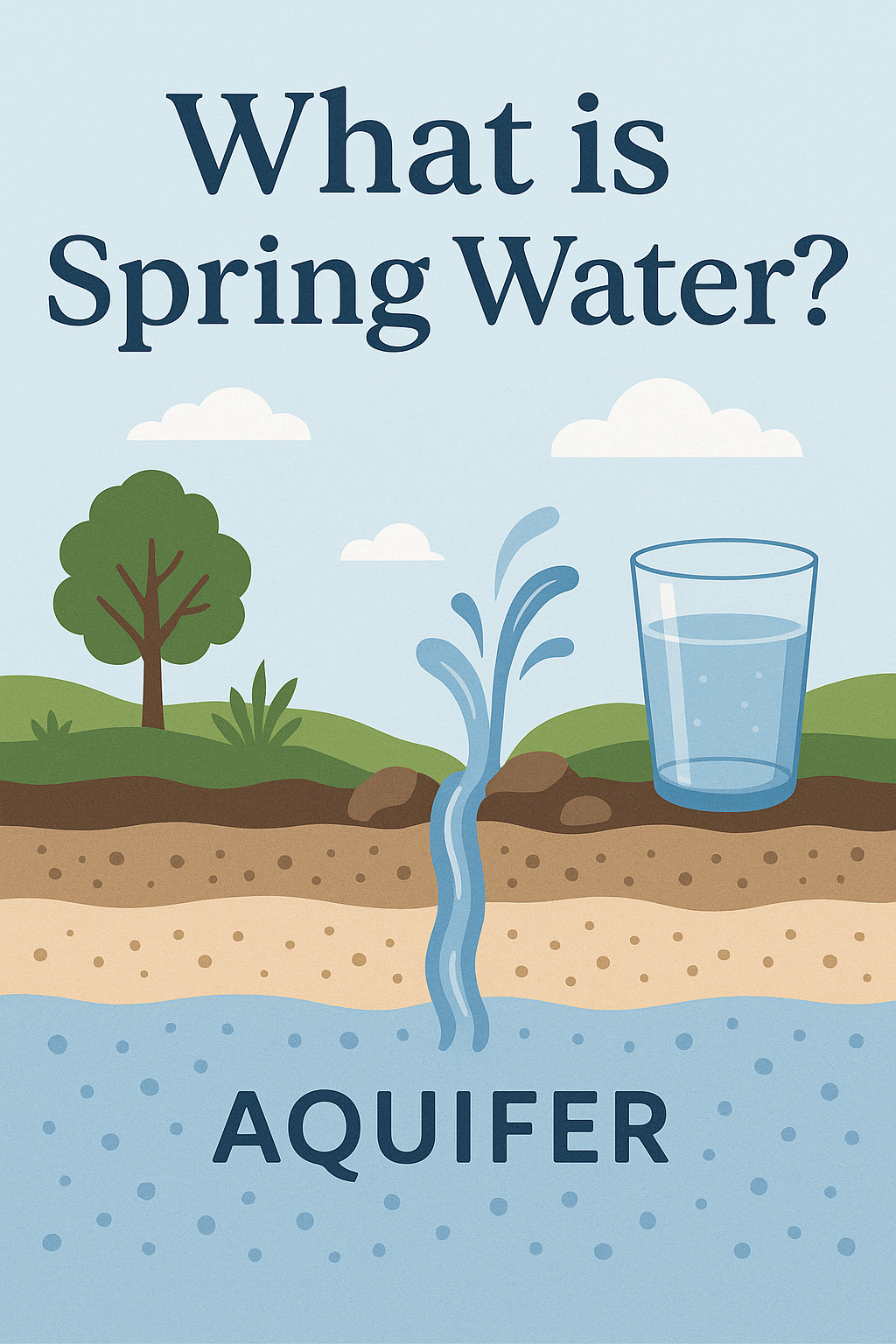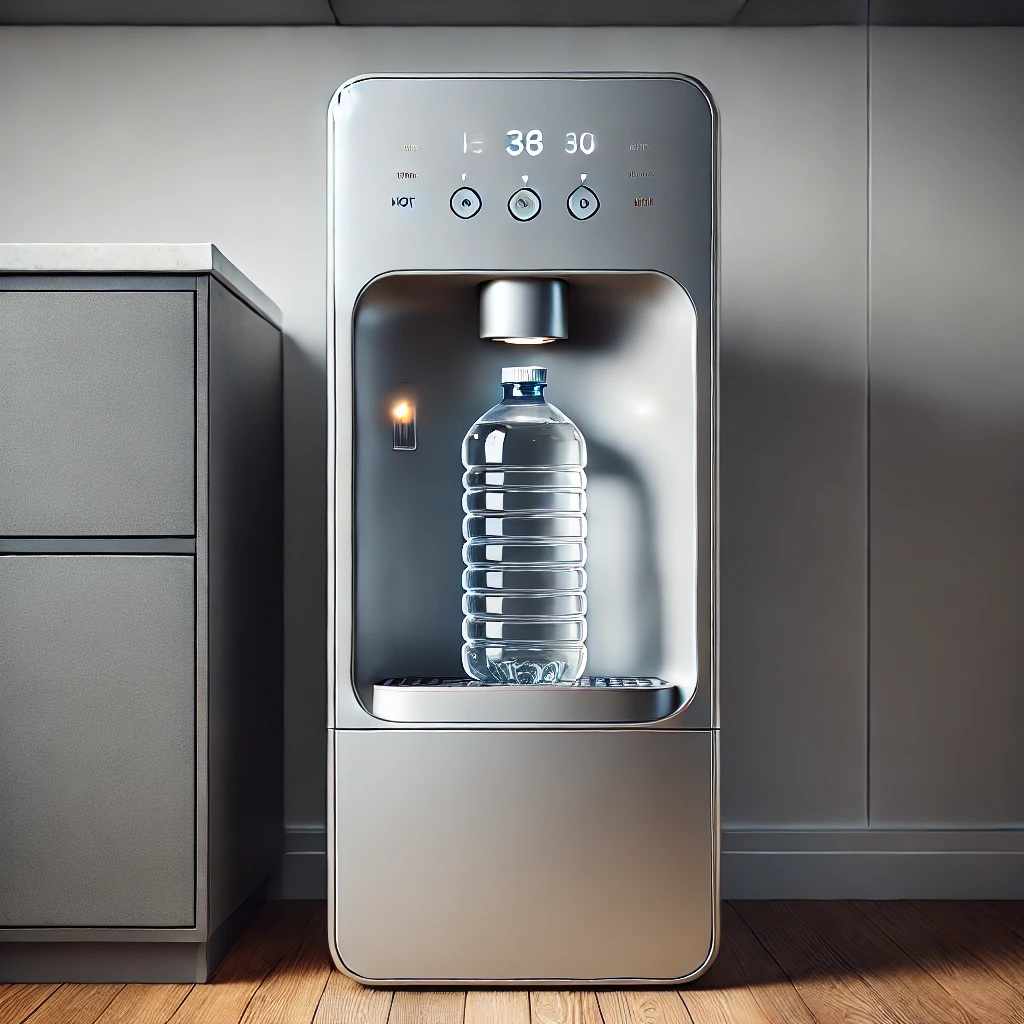
Introduction
Water seems simple — until you start comparing all the different types available today. Purified, distilled, reverse-osmosis, alkaline, mineral… the list goes on. But among all these choices, spring water stands apart as one of the most natural and unaltered forms of hydration we can drink. For me, working with naturally sourced water here at Bear Springs in Coldwater, Ontario, spring water represents something rare: a product shaped entirely by nature, not by processing.
When people ask, “What is spring water?” they’re usually looking for more than a definition — they want clarity. They want to know what makes it unique, how it forms underground, why it tastes different, and whether it’s truly better for health and the environment. And with so much confusion in the bottled-water world, it’s a fair question.
In this article, I break down the full story of spring water — from its origins in underground aquifers to the minerals that define its smooth, clean taste. My goal is to help you understand not just what spring water is, but why choosing a real spring source matters more than most people realize.
What Is Spring Water? A Deep Look at Natural Hydration From Source to Bottle
When people ask, “What is spring water?”, they’re often surprised by how different the answer is from “bottled water” in general. As someone who works closely with natural springs and renewable hydration here at Bear Springs in Coldwater, Ontario, I’ve learned that spring water isn’t created — it’s discovered. It’s a living part of the landscape, shaped by geology, protected by nature, and carried to the surface with its minerals, purity and flavor already intact.
Unlike filtered or processed water, true spring water requires nothing but responsible collection and minimal handling. It comes from a natural underground source — an aquifer — where rain and snowmelt filter through layers of rock, picking up the minerals that help define its taste, pH and natural character. For me, spring water represents one of the simplest and most honest forms of hydration.
Below, I’ll break down exactly what spring water is, how it forms, why it tastes different, how it compares to other types of water, and why choosing real spring water matters for your body and the environment.
What Exactly Is Spring Water?
Spring water is water that naturally emerges from an underground aquifer and flows to the Earth’s surface through a natural spring. It’s not manufactured, purified, distilled, or chemically altered. Instead, it’s naturally filtered underground as it travels through layers of stone, clay, soil and sand — each layer removing impurities while adding beneficial minerals.
To be considered true spring water, it must:
Come directly from a natural spring or from a protected underground aquifer
Contain naturally occurring minerals
Be collected at the spring or from a borehole tapping the same underground source
Remain essentially untreated, except for filtration that removes particles
Over-processing destroys what makes spring water special — which is why we keep ours in its most natural state.
How Does Spring Water Form Beneath the Earth?
People are often surprised to learn that spring water’s journey begins decades — sometimes centuries — before it reaches a bottle.
Here’s the natural process:
Rain and snow seep into the earth, beginning a slow filtration journey.
Water moves through porous rock and mineral-rich soil, which act like natural purifiers.
An underground reserve called an aquifer fills with this water.
When the pressure in the aquifer builds, water rises to the surface — forming a spring.
In our region of Coldwater, Ontario, the aquifer is protected by natural clay layers, creating a clean and mineral-balanced source. This natural journey shapes the unique taste and purity that processed waters simply can’t replicate.
Why Does Spring Water Taste Better Than Other Types of Water?
Taste is a reflection of geology. When water moves through layers of rock, it absorbs trace amounts of naturally occurring minerals such as:
Calcium
Magnesium
Potassium
Bicarbonates
These aren’t added afterward — they’re part of the water’s identity.
When people taste Bear Springs water, they often describe it as “clean but not flat,” “naturally smooth,” or “fresh like the outdoors.” That’s because the mineral profile is balanced — not too hard, not too soft. Purified water, by contrast, often tastes empty because the filtration process removes all minerals along with contaminants.
Is Spring Water the Same as Purified Water?
Not even close — and this is one of the biggest misconceptions among consumers.
Here’s the difference:
Spring Water
Sourced from a natural aquifer
Contains natural minerals
Lightly filtered
No additives
Naturally alkaline or neutral
Distinct natural taste
Purified Water
Usually comes from municipal tap water
Heavily processed through reverse osmosis, deionization or distillation
Stripped of all minerals
Often re-mineralized artificially
Neutral, flat taste
Spring water is as close as you can get to nature. Purified water is as close as you can get to a blank slate.
Is Spring Water Safer or Healthier?
For many people, spring water offers a more natural and balanced way to stay hydrated. Here’s why:
1. Natural Mineral Content
Minerals such as calcium and magnesium contribute to healthy hydration and overall wellness. These are naturally present in the water — not added later.
2. No Chemical Additives
Because spring water is inherently clean, it doesn’t need chlorine, fluoride, or chemical disinfectants.
3. Naturally Balanced pH
Many spring waters, including ours, have a naturally alkaline or neutral pH. This makes drinking the water feel smoother and gentler on the palate.
4. Protected from Contamination
A protected aquifer acts as a natural shield against surface pollutants. By tapping directly into the aquifer, we preserve the water’s integrity from source to bottle.
How Is Spring Water Collected Without Losing Its Natural Qualities?
At Bear Springs, our goal is to maintain the water exactly as nature produced it.
Responsible collection means:
Drawing water directly from a secure underground aquifer
Using closed, food-grade systems to prevent contamination
Filtering only to remove natural particles (like tiny grains of sand)
Avoiding chemical treatment or taste alteration
Bottling in eco-friendly, BPA-free materials
This process preserves the water’s mineral profile, taste and pH — keeping it just as pure as when it left the spring.
Why Does Choosing Real Spring Water Matter for the Environment?
Not all bottled water is created equal. The environmental impact depends largely on how the source is managed and how the product is packaged.
Here’s what matters:
Local sourcing reduces emissions from long-distance transport
Protected aquifers prevent over-tapping and preserve ecosystems
Minimal processing requires less energy
Recyclable and eco-friendly packaging reduces waste
At Bear Springs, we focus heavily on renewable hydration — meaning we bottle responsibly from a naturally replenishing aquifer and prioritize packaging that respects the planet.
How Do I Know If I’m Buying Real Spring Water?
Look for these signs:
The label states “spring water”
The bottle lists a spring location or aquifer source
There is transparency about mineral content
The brand does not rely on heavy processing
If all you see is “purified” or “reverse osmosis,” it’s not spring water.
FAQ: What People Most Often Ask About Spring Water (400 Words)
1. Is spring water better for hydration than filtered water?
Both hydrate your body, but spring water offers additional benefits through its natural minerals. These minerals can support electrolyte balance and improve taste, making it easier to stay consistently hydrated. Filtered water is clean but lacks the mineral content that enhances hydration quality.
2. Is all bottled spring water actually from a spring?
Not always. Some brands use marketing language that suggests natural origins, but the water is actually purified tap water. Always check the label for the actual source — it must clearly state a spring location to be considered true spring water.
3. Does spring water contain electrolytes?
Yes. Natural minerals in spring water — including magnesium, calcium and potassium — function as electrolytes. Unlike sports drinks, these come naturally from the earth, without sugar, coloring or additives.
4. Can spring water go bad?
Spring water doesn’t “expire” in the traditional sense, but packaging can influence shelf life. As long as the bottle is sealed and stored in a cool, dark environment, the water remains safe. Once opened, it’s best to drink within a few days for optimal taste.
5. Is spring water the same as mineral water?
Not exactly. Mineral water must contain a specific quantity of dissolved minerals and come from a protected underground source. Spring water may contain fewer minerals, but the process of natural emergence through a spring is what defines it. Both are natural waters — just with different compositions.
6. Is spring water regulated?
Yes. In Canada, spring water must meet strict safety and quality standards. Producers must verify that the water comes from a true spring or aquifer, maintain safe handling practices, and test for purity.
7. Why does spring water taste sweeter or smoother?
Natural minerals and a balanced pH often give spring water a smoother mouthfeel. Some people describe it as slightly sweet, which is simply the result of naturally occurring electrolytes.






Write a comment ...